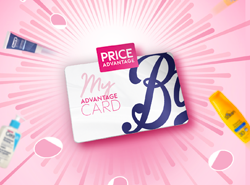Get prescription facial hair removal cream for women and reduce unwanted hair
FIND OUT MOREFrom waxing to shaving and IPL, here’s everything you need to know to take the fuss out of being fuzz free
Whether you choose to go smooth, groomed or au naturel, body hair is very much a you-do-you sort of thing. So is the way you opt to remove it, if indeed you choose to do so.
With so many different hair removal methods available, navigating your way through the different tools and techniques can be daunting, and finding what works for you even trickier. We’re on hand with an easy-to-understand breakdown of the most well-used procedures for removing unwanted hair at home, as well as some handy tips on how to achieve the smoothest results.
Read on for everything you need to know about:
• Razors and electric shavers
• Waxing
• Depilatory creams (otherwise known as hair removal creams)
• Hair lighteners
• Epilators
• IPL
1. Razors and electric shavers
Shaving is one of the quickest and most affordable options out there for removing unwanted body hair, so it makes total sense that most people choose it as their go-to method. Razors can be manual or electric and require a sharp blade to remove the hair at the skin surface and create a smooth finish.
Where can you use them?
Razors are best used on the body. However, you can buy targeted trimmers for the face and bikini areas.
Best practice guide
For best results, make sure the blade you’re using is razor-sharp and use a shaving gel to reduce friction. Gently pull the razor in the opposite direction to the natural hair growth for an ultra-precise shave. Do take care around any knobbly areas, such as ankles and knees, to avoid unwanted cuts and moisturise afterwards to soothe and calm post-shave skin.
Try another method if…
• You want long-lasting hair removal.
• You have poor dexterity. Some may find it difficult to manipulate a razor, which could lead to cuts.
• You’re prone to ingrown hairs.
For more tips and tricks, check out our how to shave guide.
2. Waxing
Waxing plucks the hair from the root for a smooth, long-lasting finish. It has gained a reputation for being painful and, while it can be, the long-lasting effects tend to outweigh the temporary discomfort.
Where can you wax?
Waxing can be used on different body parts, including the face and bikini line. If you’re opting for a hot wax at home, be especially careful around more sensitive areas (for example, if you’re looking to remove upper lip hair or pubic hair) to avoid mishaps.
How long can waxing last for?
Waxing can last between two to six weeks. Hair regrowth tends to become finer and softer over time so new hair is less stubbly than other hair removal methods, such as shaving.
Best practice guide
To make waxing as stress-free as possible, it’s useful to exfoliate the area with a gentle body scrub 24 hours before you wax. This will remove dead skin cells and help prevent ingrown hairs. After waxing, follow with a soothing gel to calm any redness or irritation.
Try another method if…
• You want to remain hair-free at all times. Waxing requires around half a centimetre of visible hair to work effectively, so there may be periods when you’ll have to be a little fuzzier.
• You want pain-free hair removal.
Want to hone your technique? Here are 10 at-home waxing tips everyone needs to know.
3. Depilatory cream
Depilatory or hair removal cream is a pain-free method of hair removal, ideal for those who are new to hair removal or who want to keep the chance of cuts to a minimum. It works by breaking down visible hair to leave skin smooth.
Where can you use hair removal cream?
Hair removal cream can be used all over the body as well as on the face and bikini area. You may need a different hair removal cream for different areas due to their sensitivity, so always check the label to make sure you’re using the correct product.
How long can results last for?
Hair removal creams remove hair at the surface rather than the root, so regrowth often occurs at around the two to three day mark.
Best practice guide
Hair removal creams can be tricky to apply, so we suggest using them in the bath or shower to keep any mess to a minimum. It’ll also make washing off much easier – no need for an awkward cream-covered dash to the bathroom!
It’s also important to always read the label and ensure you don’t exceed the maximum leave-on time, which can lead to irritated skin. We always recommend starting with a patch test to avoid adverse reactions.
Try another method if…
• You want longer-lasting hair removal.
• You have a sensitive nose (some creams have a strong smell which can be a bit off-putting).
4. Hair lighteners
While not a type of hair removal specifically, hair lightening can be a helpful technique for those looking to stealthily disguise their strays.
Rather than removing hair completely, hair lighteners remove the pigment from the hair follicles to make them appear less noticeable. This makes them a great option for those with fair skin and dark hair.
Where can you use hair lighteners?
While they can be used on all parts of the body, lighteners tend to work best on areas like the upper lip where you may want to avoid stubbly regrowth.
How long can results last for?
This depends on your hair's growth cycle; the effect will last until the follicle re-grows in its natural colour. Generally speaking, this can be around one to two weeks.
Best practice guide
It’s important to always refer to the instructions, even if you’ve used hair lighteners in the past, as they can vary between products and brands.
When applying hair lightener, ensure your skin is clean and dry. Strands should be covered from root to tip for even coverage. Also, never leave the product on longer than instructed as this can lead to skin irritation.
Lastly, as ever, do perform a patch test 24 hours before using a new lightening product.
Try another method if…
• You have darker skin tones as bleach will make hair appear more noticeable.
• You have sensitive skin.
5. Epilators
Epilators are electrical tools that pluck hairs from the root and, similar to waxing, offer a long-lasting form of hair removal as a result.
Where can you use epilators?
Epilators can be used in all areas but those less prone to sensitivity will help keep your efforts as painless as possible.
How long can epilating last for?
Results can last for up to three weeks and unlike waxing, you can even use it on short hairs.
Best practice guide
To make your epilation as easy as possible, we suggest opting for a waterproof tool and using it in the bath. Hair follicles become softer when soaked in water so this can help make them easier to remove and minimise pain and discomfort.
Also, while you don’t need to replace the head on your epilator like you would a razor, it’s important to clean it properly after each use to keep it working at its best.
Try another method if…
• You want pain-free hair removal.
6. IPL
IPL, or intense pulse light, sends pulses of light into the hair follicle to kill the cells inside. Over time, this results in the hair falling out and eventually not growing back.
Where can you use IPL?
IPL can be used on both the body and face.
How long can results last for?
IPL is a great long-term hair removal method as over time, the cells inside the hair follicle are destroyed. If they do grow back, they’re finer than before.
Best practice guide
IPL does take some preparation to get the best results. It’s a good idea to shave one hour before treatment to allow the IPL to target the roots rather than external hair. We’d also recommend applying SPF to the area after treatment to ensure your skin is protected, especially if you’re planning to be out in the sun.
Try another method if…
• You have dark skin and dark hair, or fair skin and fair hair, as IPL may not work as effectively.
• You’re looking for fast results. IPL can be a little time-consuming, so you might prefer shaving instead.
*Subject to availability and clinician approval. Charges apply









